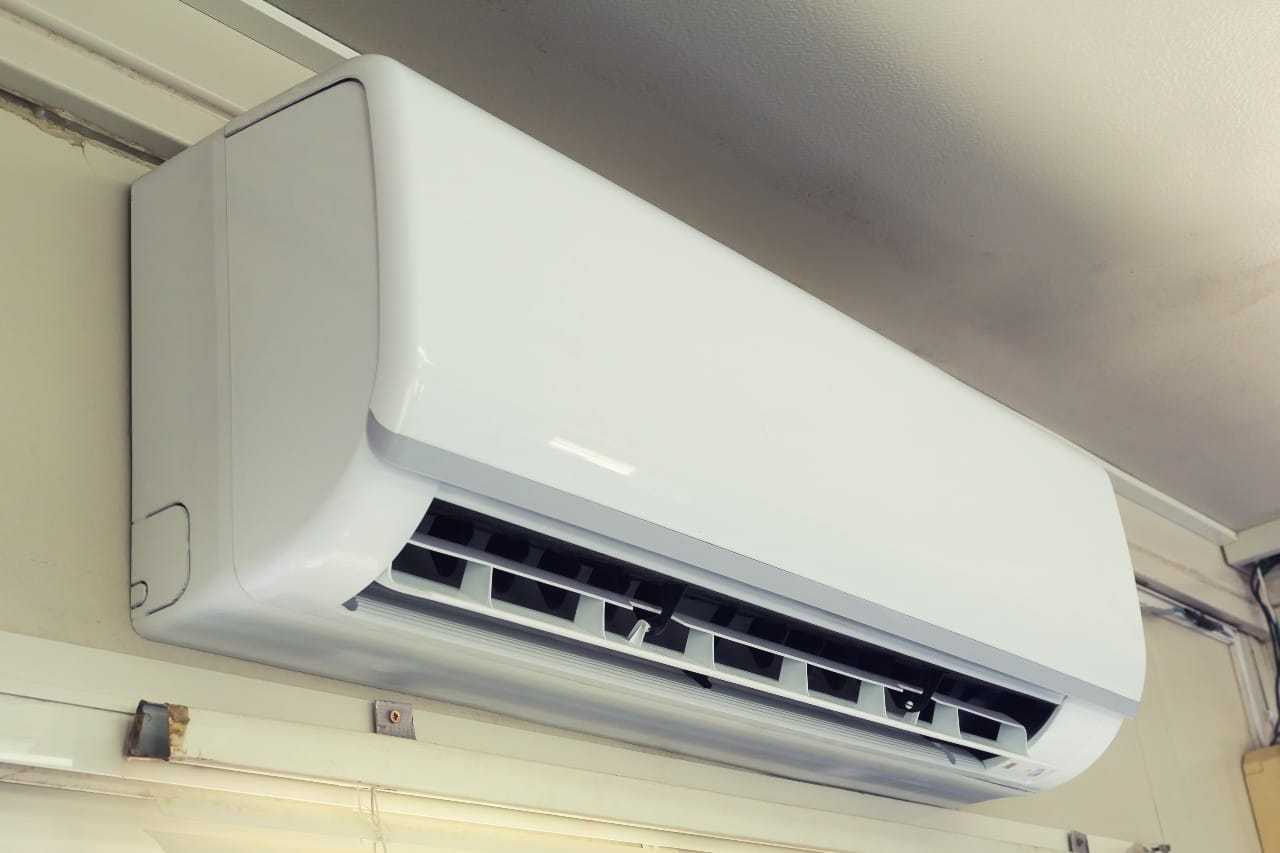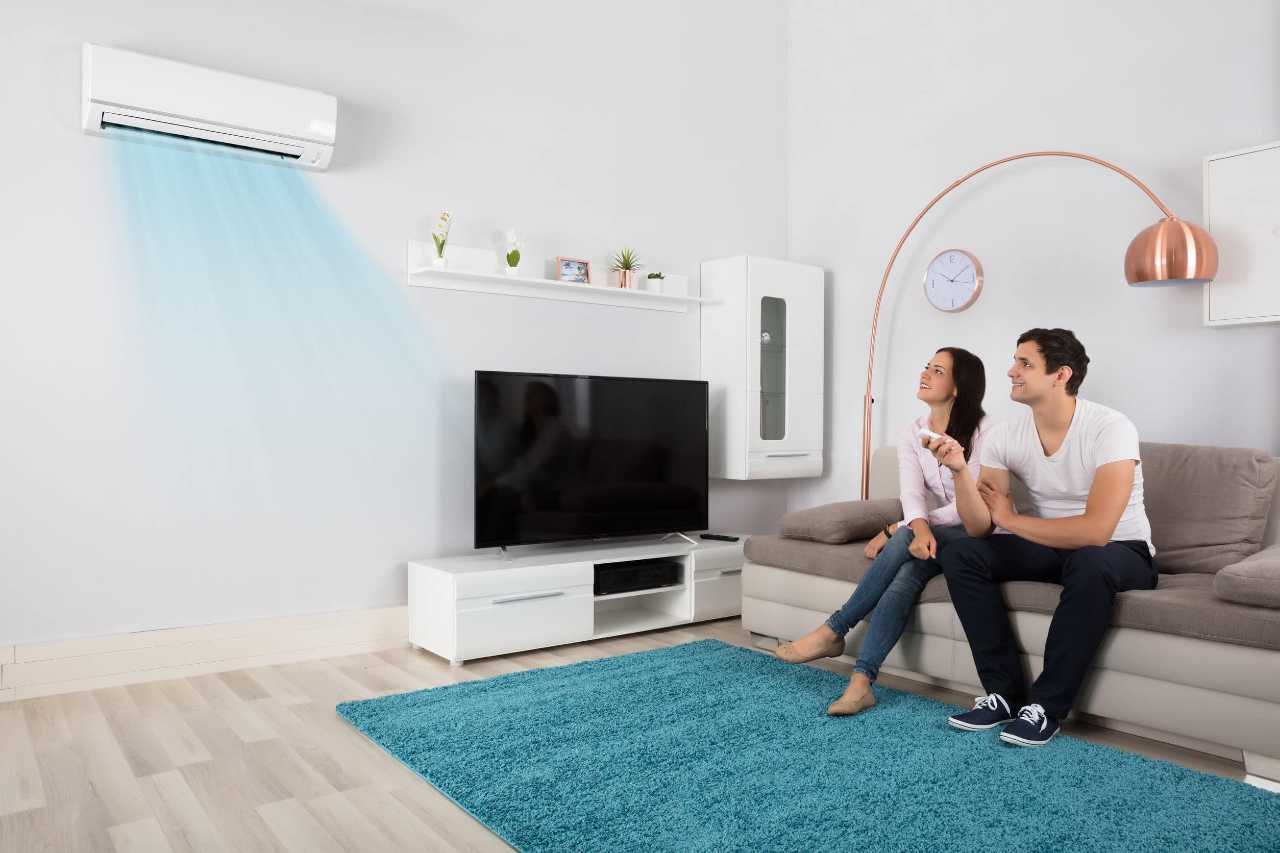One of the most essential elements in any home is the heating and cooling system. However, every house is different, and finding the perfect HVAC system for your space can be challenging. Choosing a unit depends upon your space, budget, airflow, and heating and cooling requirements. This article will dive deep into mini-split systems and whether a single-zone mini-split system or multi-zone mini-split system could be suitable for your home!
What are Mini-Split Systems?
Mini-splits, or ductless mini-splits, are a type of heating and cooling system that can be installed without using ductwork to distribute air. These machines use an outdoor condenser unit that connects to one or multiple indoor units that handle the air. These two units are connected by a refrigerant line that transfers heat to or from the indoor unit to heat or cool the air. Mini-split systems are rising in popularity due to their versatility and efficiency. They offer individual zone control, which allows you to set different temperatures in separate areas or rooms. Zoning capabilities enhance the energy efficiency and comfortability of your space. There are two types of mini-split varieties, single-zone and multi-zone systems. Read on about the advantages and disadvantages of each kind of mini-split and which might be best suited for your home!
Single Zone Mini-Split Systems Explained
Single zone systems heat or cool a single area or room. These systems consist of one outdoor unit connected to a solitary indoor unit. This is ideal for small spaces or situations where heating and cooling requirements are limited to a specific area. Alternatively, these systems are perfect for any oddly shaped areas in a home that don’t receive the proper temperature control. They are also ideal for spaces where you need independent air control from the rest of the house. Single-zone units are commonly used in bedrooms, small apartments, home offices, or other small spaces.
Multi-Zone Mini-Split Systems Explained
Multi-zone systems work similarly to single-zone systems; however, they are designed to heat or cool multiple areas or rooms independently. Like single-zone units, multi-zone splits consist of one outdoor unit, yet they connect to more than one indoor unit. They run individual refrigerant lines to each unit, allowing you to heat or cool the space separately. This offers the flexibility to set different temperatures in separate zones, allowing you to control each area and personalize the space. They are ideal for larger homes or rooms with varying heating or cooling needs. The number of zones a multi-zone system supports varies depending on the model and manufacturer. Some outdoor units can support only two indoor units, while others connect to four zones, and some accommodate even more.
What are the Main Differences Between Single and Multi-Zone Systems?
The primary difference between single and multi-zone mini-splits is the number of indoor units that connect to a single outdoor unit. Single-zone systems have one outdoor unit that attaches to one indoor unit, while multi-zone systems can support multiple indoor units from a single outdoor unit. The different number of indoor units affects the number of areas that can be heated or cooled independently. Multi-zone units can cool more than one area to separate temperatures, while single units can only supply warm or cool air to one space. Single units are designed to serve a specific area or room, while multi-zone units can be a solution for a whole home, allowing personalized comfort control in each zone or room.
The Benefits and Drawbacks of Single Zone Mini-Split Systems
Single-zone mini-split systems have several advantages. Here are a few of the primary benefits of installing a single-zone unit in your home:
1. Lower Costs All-Around
Single-zone systems are significantly lower in cost than many other types of HVAC. The initial purchase price of a single unit is less expensive than purchasing multiple indoor mini-split units and considerably cheaper than buying and installing ductwork, a furnace, or another type of HVAC. However, it doesn’t just lower upfront costs – single-zone systems are cheaper to run than most other types of HVAC. This means if you want to cool a small space cheaply, this type of HVAC is perfect for you.
2. Energy-Efficient Option
Single-zone systems are one of the most energy-efficient HVAC options. If you’re concerned about the environmental impacts of heating and cooling your home, installing a single-zone system is for you. By allowing you to heat or cool your space independently, it can be shut off when you are not using it, saving you money on your electricity bills and further impacting the environment.
3. Sleek Compact Design
These HVAC units are some of the smallest on the market – both outside and inside! Their size makes them perfect for small spaces that have a limited amount of installation room. If you want a discreet look, a single-zone unit takes up less space than multi-zone units, blending in with the aesthetic of your home more seamlessly.
4. Easy and Quick Installation
Single-zone mini-split systems are relatively easy to install, as they only involve one indoor and one outdoor unit. This means there won’t be pesky construction that can last days or weeks, and the labor costs for the technicians that install and maintain your unit will remain low.
Although there are many benefits, every HVAC system has disadvantages. Here are the top drawbacks of single-zone systems.
1. Limited Heating and Cooling Scope
Single-zone units are designed for a specific area or room. This means they have limited heating and cooling abilities. The outdoor compressor and indoor units have less powerful systems than other HVACs. This makes them unsuitable for large spaces or bigger rooms with multiple stories or vaulted ceilings. Suppose you are trying to use one unit to heat or cool various adjoining rooms. In that case, you will find it difficult to control the temperature in all rooms, and the air distribution to be uneven. For example, you may have to cool the room with the single unit to a freezing temperature to get the adjacent room to a comfortable temperature.
2. Can’t Cater to Independent Spaces
A single-zone system is not for you if you want different temperatures in separate spaces. Due to their one-unit nature, single-zone systems can only cater to one specific temperature and do not allow for individualized control or personalization for different areas.
The Advantages and Disadvantages of Multi-Zone Mini-Split Systems
Multi-zone mini-splits are an excellent way to heat and cool larger spaces or your home. Here are a few of the most significant advantages of these systems:
1. Significant Zoning Capabilities
Multiple indoor units allow homeowners to create distinct comfort zones throughout the house. This is particularly useful when family members have different temperature preferences or when certain areas require more cooling or heating.
2. Centralized Control
Multi-zone units also allow for centralized control. Although you can heat and cool individual spaces differently, they can all be managed from a single interface. This streamlines any problems you might have, and you won’t be looking around for many different remotes!
3. An Energy-Efficient Option
Multi-zone systems help save energy by only heating and cooling the occupied zones of your home. This avoids wasting energy on unoccupied or unused spaces and can save you money on electricity bills!
4. Low-Cost Home Solution
Although they have a higher initial cost than a single-zone system, they are lower price than installing many single-zone systems throughout your home. Additionally, if your home does not have existing ductwork, this is a perfect solution, as installing ductwork can be costly!
As with any HVAC, multi-zone systems have their disadvantages as well. Here are the top drawbacks to these units:
1. The Initial Cost
Multi-zone mini-splits are more costly upfront as they are more expensive to purchase and install than single-zone systems.
2. Installation is Complex
Installing a multi-zone unit is complex. You must install each unit throughout your home and run the separate refrigerant lines back to the outdoor unit. This is a time-consuming and complicated process, which can also increase your labor costs.
3. Your System’s Capacity
Multi-zone systems have a maximum distribution capacity throughout all the connected indoor units. If the heating or cooling load exceeds this capacity, it reduces performance and efficiency. Proper sizing, calculation, and use are essential to ensure optimal performance.
What Type of Mini-Split System is Best for Me?
If you’re selecting a mini-split system, it is crucial to consider your circumstances. You must evaluate your home size, room layout, and your specific heating and cooling requirements. Additionally, you must keep your budget for the unit and your monthly electricity bills and maintenance costs in mind. A single-zone system may suffice and be cost-effective for smaller homes or spaces with limited needs. These units are ideal for small apartments, bedrooms, home offices, or for those who only wish to control the temperature in one area of the home. Multi-zone systems are ideal for larger homes or spaces with varying temperature requirements in different zones. Their personalized comfort control and energy efficiency in big areas are unmatched.
Proper sizing and load calculation are critical to ensure you choose the correct system that matches your space’s heating and cooling requirements. Consulting a professional HVAC contractor can help determine the optimal mini-split plan for your area and needs. An experienced HVAC technician will assess your home’s layout, insulation, specific heating and cooling requirements, and budget to recommend the appropriate system size and configuration. 
How Apollo Heating and Air Conditioning Can Help
Are you considering a mini-split system for your home in the Washington state area? Apollo Heating and Air Conditioning is here to help! Our team of HVAC technicians is ready to come out and inspect your home and assess which type of unit is best for your space. We give personalized recommendations that align with your needs and budget. Our experienced team will quickly and efficiently install your unit and can maintain it for years to come. Contact Apollo Heating and Air for expert advice and professional installation services today!


